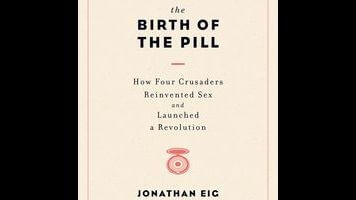A brief, fascinating history of “the pill”

That it came to be called “the pill”—as if all other pills should take a back seat—is telling, offers Jonathan Eig in his detailed, compelling history The Birth Of The Pill: How Four Crusaders Reinvented Sex And Launched A Revolution. Until the late 1950s, couples who didn’t want to conceive were limited to methods that were ineffective, inconvenient, or both. Eig paints a vivid picture of women, especially poor women, who were desperate to stop having children in a time when “wifely duties” meant they wouldn’t (or couldn’t) refuse sex.
Along came a perfect confluence of interested parties—the “four crusaders” of the subtitle—ignited by the passion of Margaret Sanger, whose mission was to provide safe, legal, easily accessible birth control. She’s credited with coining the term, in fact, and an organization she founded eventually became Planned Parenthood, which plays a looming, largely unhelpful role in the story. Decades before the pill was even a dream, Sanger battled against American laws that punished the act of simply dispensing information about any form of contraception. Eig makes Sanger the real hero of this story without forgiving her less-than-enlightened views on eugenics and race. She’s the one who—though not a scientist—insisted that a simple pill was the cure-all for overpopulation, unwanted children, and even sexual repression. It wasn’t, of course, but it helped.
Sanger found a kindred spirit in Dr. Gregory Pincus, whom Eig paints as a cast-out of the legitimate scientific community. He takes up the challenge in a makeshift Massachusetts lab, where what we would now consider mad science was the norm: Pincus, a big, possibly overconfident personality, first began testing on animals before eventually branching out to women—only some of whom were told they were even part of a study. Eventually, he had to quietly move his studies elsewhere, from Puerto Rico to an asylum—he even moved his family into the latter for a time, so devoted was he to making progress.
The actual discovery and eventual sale of the birth-control pill, which was initially marketed under the name Enovid, came almost shockingly quickly. Sanger and Pincus met in 1951, and the pill was on the market by 1957—though approved only for “menstrual disorders” at that point, amid controversy and some pushback from the Catholic Church. It’s a fascinating story of an everyday item that changed the course of history in massive but almost invisible ways, and Eig does a remarkable job of keeping the science and the storytelling in harmony.
The other two crusaders, while no less important to the overall goal, aren’t as crucial to the story itself: Katharine McCormick married a wealthy man who went completely insane, and after building him an asylum with some of the money, she poured funds into Pincus’ work. Then there was the handsome doctor with the fabulous name, John Rock, a Catholic who served as a calming public face for birth control. It turns out, funnily enough, that an easily available birth-control pill wasn’t as controversial or shunned as might be expected. The world was ready for it, and while the Catholic Church decided it wasn’t okay, millions of women—Catholic and otherwise—raced out and got prescriptions. The Birth Of The Pill goes into the after-effects of the invention only briefly, in an epilogue, but it doesn’t need bold statements to draw the obvious line between sexual freedom and the dawn of the 1960s in America. Without the pill, those times—and all subsequent times—would have been drastically different.